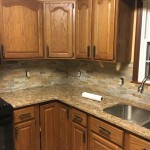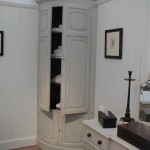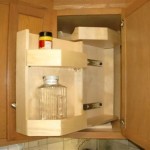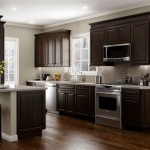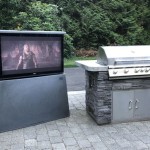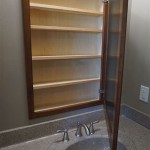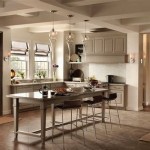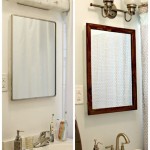Replacing China Cabinet Glass: A Comprehensive Guide
China cabinets are cherished pieces of furniture, often housing valuable and sentimental items. The glass panes within these cabinets not only protect the contents but also contribute significantly to the overall aesthetic. However, accidents happen, and broken or cracked glass can detract from the cabinet's beauty and compromise its protective function. Replacing china cabinet glass is a feasible project for many homeowners, offering a cost-effective alternative to replacing the entire cabinet. This comprehensive guide outlines the necessary steps, tools, and considerations for successfully replacing china cabinet glass.
Assessing the Damage and Choosing Replacement Glass
The initial step involves carefully assessing the extent of the damage. Minor chips or cracks may sometimes be repaired using specialized glass repair kits. However, significant damage, such as shattered or severely cracked glass, necessitates replacement. Accurately measuring the dimensions of the original glass pane is critical. Measure the height, width, and thickness with precision. Consider using metric measurements (millimeters) for a higher degree of accuracy.
Selecting the appropriate replacement glass is just as important as accurate measurements. Several types of glass are suitable for china cabinets, each with its own characteristics and aesthetic appeal. Clear glass is the most common choice, offering unobstructed visibility of the cabinet's contents. Reflective glass can add a touch of elegance and create a sense of depth. Textured glass, such as frosted or patterned glass, can obscure the contents while still allowing light to pass through. Safety glass, such as tempered or laminated glass, is highly recommended, especially if there are young children or pets in the household. Tempered glass is exceptionally strong and shatters into small, relatively harmless pieces, while laminated glass consists of two layers of glass bonded together with a plastic interlayer, preventing it from shattering into sharp fragments.
The thickness of the replacement glass should match the original glass. Using glass that is too thin can compromise its structural integrity, while glass that is too thick may not fit properly within the cabinet frame. It is advisable to consult with a local glass supplier or hardware store for guidance on selecting the appropriate type and thickness of glass for the specific china cabinet.
When ordering the replacement glass, specify the exact dimensions, type of glass, and any desired edge treatments. Edge treatments, such as polished edges, can enhance the appearance and safety of the glass. A polished edge reduces the risk of cuts and provides a smoother, more refined finish. Beveled edges or other decorative edge treatments can also be considered to complement the cabinet's style.
Removing the Broken Glass
Safety is paramount when removing broken glass. Wear thick work gloves and safety glasses to protect hands and eyes from sharp fragments. Place a drop cloth or tarp underneath the cabinet to catch any falling pieces. Begin by carefully removing any large pieces of glass by hand, gently lifting them away from the frame. Use pliers or a similar tool to remove any small shards that may be embedded in the frame. Exercise caution to avoid damaging the frame or surrounding woodwork.
Once the larger pieces have been removed, use a utility knife or scraper to carefully remove any remaining silicone sealant, glazing compound, or putty that holds the glass in place. Soften the sealant with a heat gun on a low setting if necessary, but be careful not to overheat the surrounding wood. Work methodically around the perimeter of the frame, gently separating the glass from the frame. A putty knife or chisel can be used to gently pry the glass away from the frame, but use extreme caution to avoid splintering the wood.
After removing all the glass and old sealant, thoroughly clean the frame. Use a brush or vacuum cleaner to remove any loose debris, dust, and glass fragments. Inspect the frame for any damage, such as cracks, chips, or loose joints. Repairing any damage to the frame before installing the new glass will ensure a proper fit and prolong the life of the cabinet.
Once the frame is cleaned, remove any existing glazing points or retaining clips. These small metal fasteners hold the glass in place and are typically found around the perimeter of the frame. Use pliers or a specialized glazing point tool to carefully remove them. Save these fasteners if they are in good condition and can be reused. If they are damaged or corroded, replace them with new ones.
Installing the New Glass
Before installing the new glass, apply a bead of silicone sealant or glazing compound around the perimeter of the frame. The sealant should be applied evenly and consistently to ensure a watertight seal. Choose a sealant that is specifically designed for glass and wood, and that is compatible with the type of finish on the cabinet. Avoid using sealants that contain solvents, as they can damage the wood finish.
Carefully position the new glass pane within the frame. Ensure that the glass is centered and that the edges are flush with the frame. Gently press the glass into the sealant, ensuring that it is firmly seated. Avoid applying excessive pressure, as this can crack the glass. Check that the glass sits evenly within the frame and that there are no gaps or uneven areas.
Secure the glass in place using new or reused glazing points or retaining clips. Space the fasteners evenly around the perimeter of the frame, typically every 4-6 inches. Use a glazing point tool or pliers to carefully insert the glazing points into the wood frame. Ensure that the points are securely embedded in the wood and that they are holding the glass firmly in place. If using retaining clips, ensure that they are properly aligned and that they provide sufficient pressure to hold the glass in place.
Once the glass is secured, use a putty knife or spatula to smooth the sealant around the edges of the glass. Remove any excess sealant and create a neat, professional-looking finish. Wipe away any smudges or fingerprints with a clean cloth. Allow the sealant to cure completely before handling the cabinet or placing any items inside. The curing time will vary depending on the type of sealant used, so refer to the manufacturer's instructions for specific recommendations.
Inspect the finished installation carefully. Check that the glass is securely in place, that the sealant is smooth and even, and that there are no gaps or leaks. Clean the glass with a glass cleaner and a soft cloth to remove any remaining fingerprints or smudges. Allow the cabinet to air dry completely before placing any items inside. Regular cleaning and maintenance will help to keep the glass looking its best and prolong the life of the cabinet.

How To Remove Glass From Antique China Cabinets Salvaged Inspirations

Diy China Cabinet Makeover Steps With Pics Joyful Derivatives

Diy China Cabinet Makeover Steps With Pics Joyful Derivatives

Diy China Cabinet Makeover Steps With Pics Joyful Derivatives

How To Remove Glass From Antique China Cabinets Salvaged Inspirations

China Cabinet Refresh Confessions Of A Serial Do It Yourselfer

The Best Way To Upcycle A China Cabinet Furniture Makeover Reinvented Delaware

Stunning China Cabinet Makeover Before After

Before After My Painted China Cabinet Makeover

The Best Way To Upcycle A China Cabinet Furniture Makeover Reinvented Delaware
Related Posts

